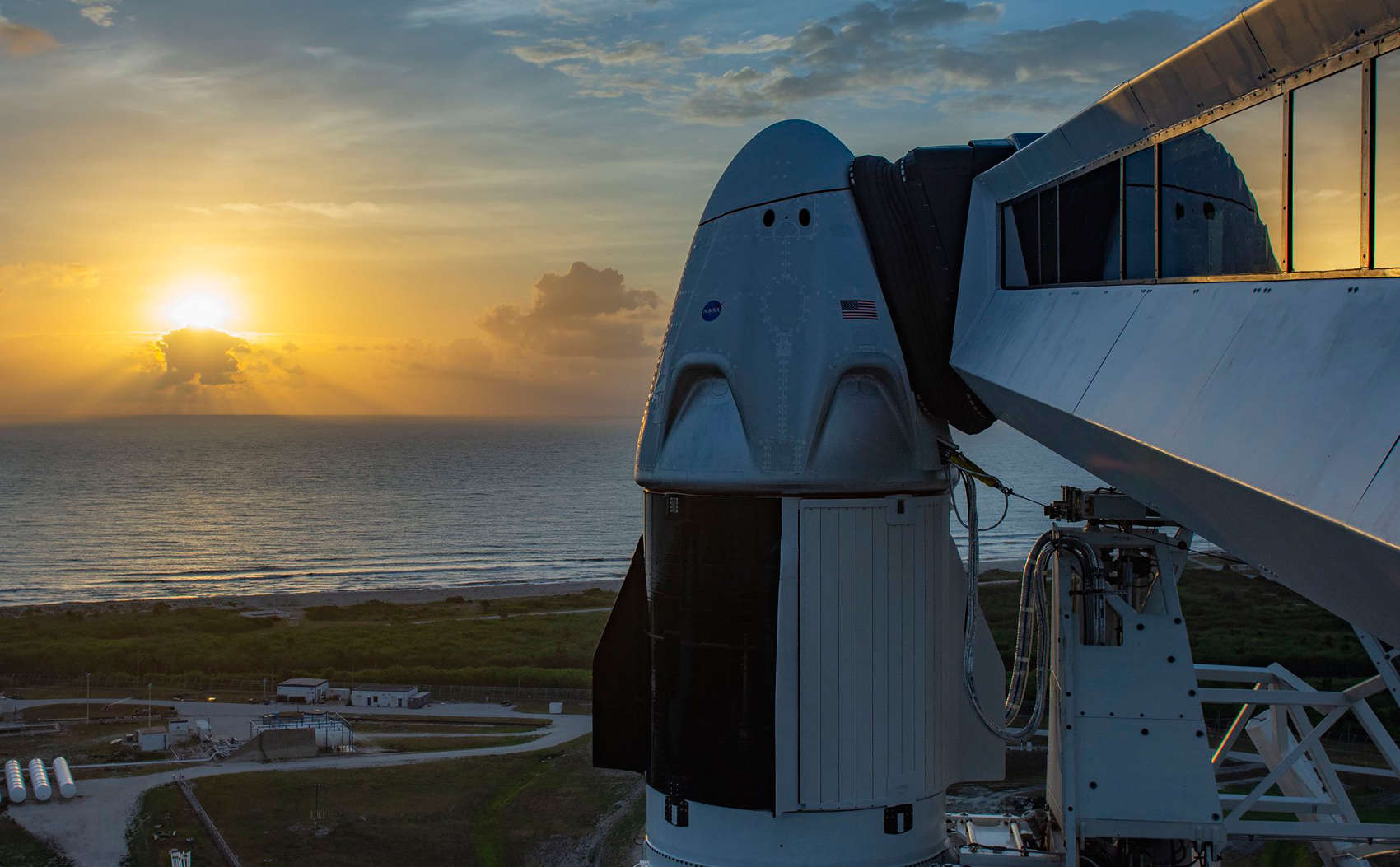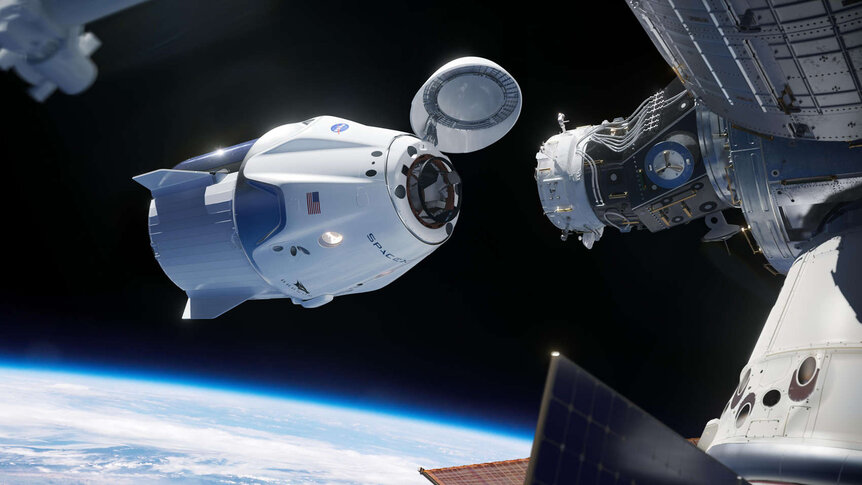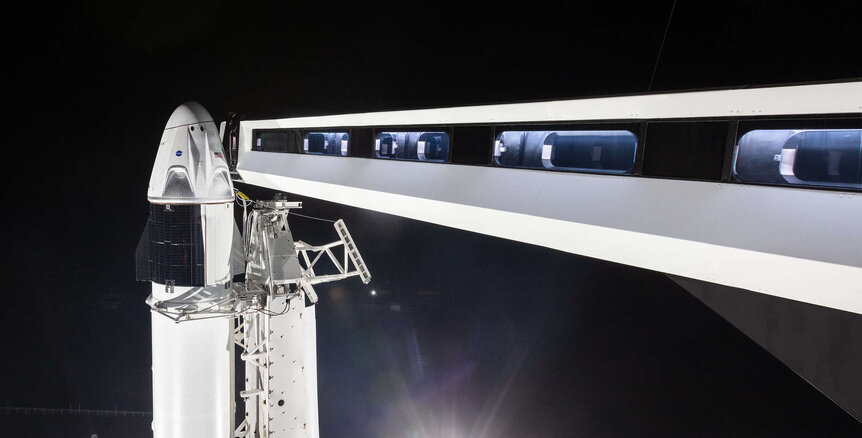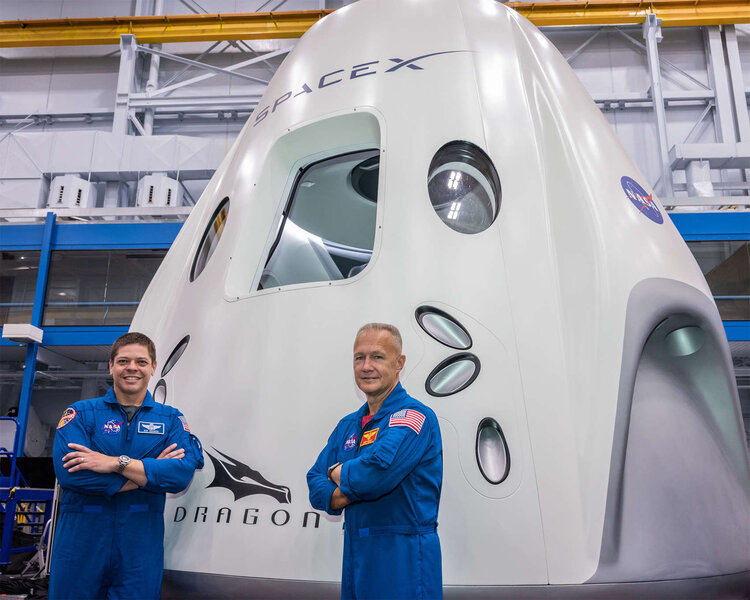Create a free profile to get unlimited access to exclusive videos, sweepstakes, and more!
UPDATE: Here's what you need to know about today's NASA/SpaceX crewed launch

[NOTE: This is an updated version of the article I wrote for the first launch attempt on Wednesday 27 May 2020. That attempt was scrubbed minutes before launch due to weather concerns, including the potential for lightning strikes along the flight path of the Falcon 9.]
[UPDATE (19:50 UTC 30 May, 2020): The Falcon 9 and Crew Dragon with Bob Behnken and Doug Hurley on board lifted off on time for their historic journey as the first astronauts to launch to orbit on a commercial rocket. Everything went well, and they are currently on their way to the International Space Station, due to arrive Sunday morning for docking.]
The last time human beings launched from American soil into Earth orbit was on 8 July 2011 — 8 years, 10 months, and 23 days ago. It’s been 3,250 days.
That is planned to change today, when a SpaceX Falcon 9 is scheduled to roar into orbit for the Demo-2 flight, a Crew Dragon atop the 70-meter-high stack, with two astronauts on board: Bob Behnken and Doug Hurley.
The launch is scheduled for 19:22 UTC (3:22 p.m. Eastern US time).
If all goes well they’ll be at the International Space Station in about a day, whereupon the Dragon will dock automatically with ISS at the Harmony module, and Behnken and Hurley will begin work with the Expedition 63 crew already on board. They’re scheduled to remain from about 1 to 4 months, returning to Earth for a splashdown in the Atlantic Ocean no later than late September.
Everything related to hardware and wetware (humans, that is) looks good; on 22 May the rocket performed a successful “static fire” test: A full-up test including fueling the rocket and a short propellant burn to make sure all is well. Also, on the 27 May attempt all systems were looking good; only the weather was a problem and ultimately caused the launch to be scrubbed. The flight passed its readiness review on Monday, 25 May, and is go for launch.
Weather is still an issue for today’s attempt. As I write this update the chances are 50/50 due to bad weather in the area around the Florida launch facility. If they cannot launch today, the next backup date is tomorrow, Sunday, 31 May, at 19:00 UTC (3:00 p.m. Eastern). But the weather isn’t looking good for then, either. More windows for launch open in early June, if needed, but they have not yet been announced.
These dates represent what are called instantaneous windows, meaning that if the Falcon doesn’t launch right on time, they’ll have to wait for the next window. The reasons for this are many, but mostly they have to launch when the ISS orbit aligns with the launch facility. The payload is heavy, and there is a limited amount of fuel in the rocket to get the Crew Dragon to ISS. If the launch opportunity is missed, waiting even seconds means the geometry of the flight won’t get the Crew Dragon to ISS.
There is a lot riding on this mission. When the Space Shuttle Orbiter Atlantis touched down for the last time on 21 July, 2011, the Shuttle Transport System program had already been canceled by President Bush. The Constellation program was started to design and build a replacement vehicle, but was plagued with cost overruns and schedule delays. President Obama canceled that, but there wasn’t much to replace it with. NASA wound up saddled with the Space Launch System, which I have been very clear about as a gross waste of time, money, and effort — it will cost at least a billion bucks to launch (and that’s not including the many billions spent designing it), is non-reusable, and is basically a jobs and pork program by certain members of the Senate.
During the gap in America’s ability to launch a crewed mission, we’ve had to rely on the Russian Soyuz rocket, and they have been price-gouging NASA for some time. But they recently lowered their prices, announcing it in a somewhat petulant manner to my ear. Why? Because of SpaceX.
When the private space company SpaceX started up it had many problems — getting to space is hard — but step by step they’ve made progress, amazing progress. Their first rocket, the Falcon 1, had three failed launches before achieving orbit in 2008. Since that time The Falcon Heavy has launched three times, all successfully. In 2012 the first Dragon capsule berthed with the ISS, and has been back up a score of times, with several capsules reflown to space, some more than once.
The Demo-1 flight was in 2019, with the unoccupied Crew Dragon launched and successfully docking with ISS. Now, a year later — after delays, to be sure — Demo-2 is ready to fly.
When it does, and if it’s successful, it will mean astronauts can once again launch on American-built vehicles from American soil. A source of pride? Certainly. But it will also save NASA a ton of money. SLS and the Orion capsule have already cost about $40 billion (2020 dollars), and it’s unclear when they will launch humans. Falcon and Dragon have cost a fraction of that, and going into the future will cost far less per flight, too.
I’ve thought about this gap in American human spaceflight, mostly in terms of history. After the Apollo-Soyuz mission, which splashed down on 24 July 1975, it was almost 6 years before the U.S. launched astronauts again on the first Space Shuttle flight. At the time that seemed interminable … but who recalls it now? The Shuttle flight was itself historic, of course, but four decades later that gap is more of a footnote in spaceflight history.
The flight of this Dragon is historic as well — it’s the first crewed launch into orbit by a commercial company. But I wonder if, in a few decades' time, the gap will seem more incidental than influential. A political failing that slowed but did not stop the urge to explore space.
Mind you, the next flight of the Dragon with astronauts on board, called the Crew-1 mission, is scheduled for 30 August. That’s just three months from now. Clearly NASA is confident about this demo flight, but it also shows that flights to space may become a lot more common in the near future. Once Boeing’s Starliner starts flying as well we’ll see what the future of crewed spaceflight really is.
Oh, and incidentally, that last flight of Atlantis in 2011? The pilot was Doug Hurley. He is literally spanning the gap in U.S. human spaceflight, a single human bridge across the years that brings all of humanity a step closer to being a spacefaring species.
May they have clear skies and a smooth ride to orbit. Ad astra.
You can watch the launch live at these streams:
The Discovery and Science Channels will also be covering it live.






























